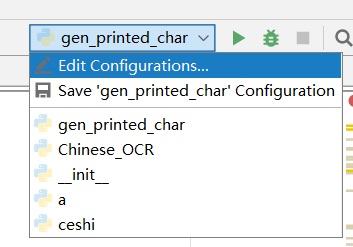python argparse模块 argparse是预先在下图位置输入参数,比如图片旋转的角度,图片的长宽还有图片最终存放的位置。然后运行此程序后,这些参数就自动的被调用了。
以下为网上找的相关资料:
vars()dict 属性,则vars()函数返回给定对象的dict 属性.(函数返回对象object的属性和属性值的字典对象1 )
日常运用:
1 2 3 4 5 6 7 8 9 10 11 12 13 14 15 16 17 18 19 20 21 22 23 24 class WGAN(): def __init__(self,d1,d2): self.args = d1 self.kwargs = d2 def printval(self): print(self.args) print(self.kwargs) def parse_train(): parser = argparse.ArgumentParser(description="Tain WGAN model") parser.add_argument('--try1',dest='d1',default=1, type = int, help = "this is try1") parser.add_argument('--try2',dest='d2',default=2, type = int, help = "this is try2") args = parser.parse_args() return args def main(): args = parse_train() wgan = WGAN(**vars(args)) wgan.printval() if __name__ == "__main__": main()
例如上述代码,vars就是将argparse中的所有属性都传给wgan。
若不用 wgan = WGAN(**vars(args)),则需要输入wgan = WGAN(args.d1,args.d2),在参数较多的情况下十分冗余,不便阅读
Python os.path() 模块 os.path 模块主要用于获取文件的属性。
以下是 os.path 模块的几种常用方法:
方法
说明
os.path.abspath(path)
返回绝对路径
os.path.basename(path)
返回文件名
os.path.isdir(path)
判断路径是否为目录
os.path.dirname(path)
返回文件路径
os.path.exists(path)
如果路径 path 存在,返回 True;如果路径 path 不存在,返回 False。
os.path.lexists
路径存在则返回True,路径损坏也返回True
os.path.expanduser(path)
把path中包含的”“和”user”转换成用户目录
os.path.isabs(path)
判断是否为绝对路径
os.path.join(path1[, path2[, …]])
把目录和文件名合成一个路径
1 2 3 4 5 import os file='/t/a.txt' print(os.path.basename(file) ) # 返回文件名 print(os.path.dirname(file) ) # 返回目录路径 print(os.path.abspath(file) )
1 2 3 4 5 6 7 8 9 10 import os Path1 = 'home' Path2 = 'develop' Path3 = 'code' Path10 = Path1 + Path2 + Path3 Path20 = os.path.join(Path1,Path2,Path3) print ('Path10 = ',Path10) print ('Path20 = ',Path20)
1 2 3 **输出** Path10 = homedevelopcode Path20 = home\develop\code
shutil shutil.rmtree() 表示递归删除文件夹下的所有子文件夹和子文件。

